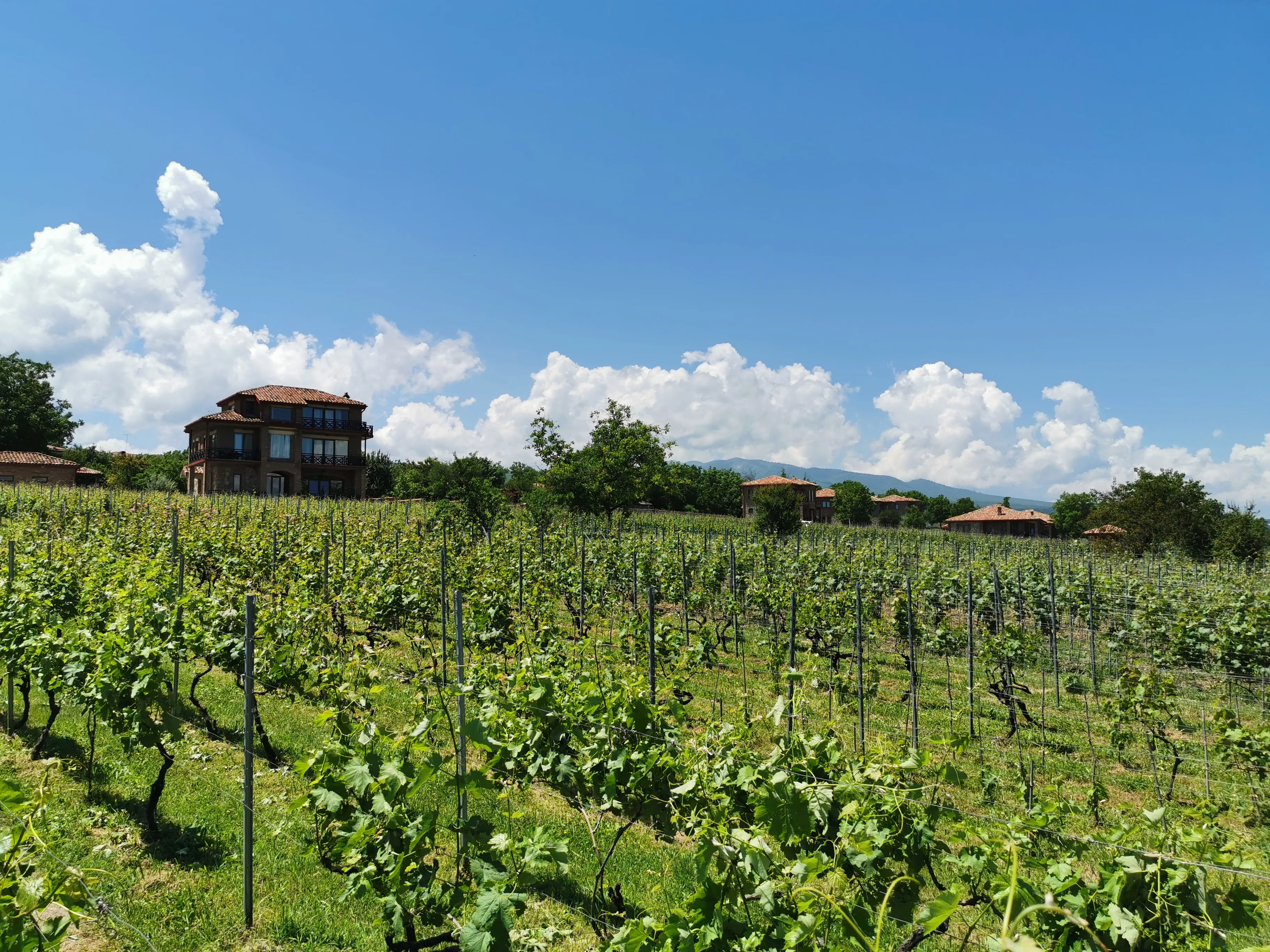Georgia, nestled at the crossroads of Europe and Asia, is renowned not only for its breathtaking landscapes and rich history but also as the birthplace of winemaking. With an 8000-year-old tradition, Georgia proudly holds the title of the cradle of wine, pioneering the unique Qvevri winemaking method in clay vessels, recognized by UNESCO as an intangible cultural heritage. If you are a wine enthusiast eager to delve deeper into this exceptional industry, Georgia is an unmissable destination. This article will provide you with comprehensive ways to explore and experience the Georgian wine industry, from its history and culture to firsthand experiences in its renowned winemaking regions (vinodeliye).
Discovering the History and Culture of Georgian Wine
To truly understand the Georgian wine industry, the first step is to grasp the history and culture of winemaking (виноделие) that is deeply ingrained in the lives of its people. Wine is more than just a beverage; it is an integral part of Georgian cultural identity, traditions, and even spirituality.
8000 Years of Winemaking History
Georgia boasts the world’s oldest continuous winemaking history, spanning approximately 8000 years. Archaeologists have unearthed evidence of winemaking dating back to the Neolithic period, proving that Georgians began cultivating grapes and producing wine from very early times. The traditional method of making wine in Qvevri clay vessels has been passed down through generations and is still preserved today.

Expansive vineyards in Kakheti, the heart of Georgia’s wine industry, where 8000 years of winemaking history have unfolded.
Wine Culture Deeply Rooted in Life
Wine plays a central role in Georgian culture. It is present at every significant occasion, from festivals, weddings, and birthdays to everyday family meals. Georgians have a special affection for wine, expressed in the common greeting “How is your vineyard?” instead of a typical hello. Wine is not just a drink but also a symbol of hospitality, friendship, and community bonding.
The traditional Georgian Qvevri winemaking method was recognized by UNESCO as an Intangible Cultural Heritage in 2013. This affirms the immense cultural and historical value of Georgian winemaking (виноделие) to the world.
Understanding the Unique Qvevri Winemaking Process
One of the elements that sets Georgian wine apart and makes it unique is the Qvevri winemaking method. This is a traditional process dating back thousands of years, producing wines with distinctive flavors and characteristics.
Qvevri Clay Vessels – The Soul of Georgian Wine
Qvevri are large clay vessels, shaped like eggs, fired in a kiln and lined with beeswax on the inside. Qvevri come in various sizes, from a few dozen liters to thousands of liters, and are buried underground in wine cellars (marani).

Traditional Marani wine cellar, where Qvevri vessels are buried deep underground, creating an ideal environment for fermentation and wine aging.
The Qvevri Winemaking Process
The Qvevri winemaking process begins with harvesting ripe grapes, which are then crushed and gently pressed. The entire mixture, including grape juice, grape skins, stems, and seeds (known as “chacha”), is poured into the Qvevri. Natural fermentation occurs in the Qvevri due to the native yeasts present on the grape skins.
Throughout the fermentation and aging process, the temperature is naturally controlled by the underground location of the Qvevri. Wine is aged in Qvevri for a period ranging from several months to several years, depending on the wine type and the winemaker’s style.
Qvevri wines often have a deep color, complex flavors, and robust tannins. This method produces unique wines that distinctly reflect the terroir and grape varietals of each region.
Famous Winemaking Regions and Signature Grapes of Georgia
Georgia has numerous renowned winemaking regions, each with unique characteristics in terms of terroir, climate, and grape varieties, contributing to the diversity and richness of the wine industry.
Kakheti – The Heart of Georgian Wine
Kakheti is the largest and most important winemaking region in Georgia, accounting for about 70% of the country’s wine production. Kakheti is famous for its vast vineyards, mild climate, and fertile soils, creating ideal conditions for grape cultivation and high-quality wine production.

Vast vineyards in Kakheti, stretching across hills and valleys, creating a stunning winemaking landscape.
Famous red grape varieties of Kakheti include Saperavi, Cabernet Sauvignon, and Merlot, used to produce full-bodied, powerful red wines with long aging potential. Kakheti also produces white wines from Rkatsiteli and Mtsvane grapes, offering fresh and delicate flavors.
The town of Sighnaghi, located in the center of Kakheti, is known as the “City of Love” and is also a significant winemaking center of the region. It boasts numerous wineries and traditional cellars, welcoming tourists for tours and wine tasting (дегустация).
Kartli – The Land of Sparkling Wines
Kartli is another important winemaking region of Georgia, located in the central part of the country. Kartli is renowned for producing high-quality sparkling wines, made using the traditional method (méthode traditionnelle) similar to French Champagne.
The main grape varieties of Kartli include Chinuri, Goruli Mtsvane, and Aligote, used to produce white and sparkling wines. Kartli wines often have fresh, mineral flavors and high acidity, making them perfect for special occasions.
Imereti – The Diversity of White Wines
Imereti is a winemaking region in western Georgia, famous for its diversity of white wines. Imereti has a humid climate and rich soils, providing conditions for growing many different white grape varieties.
Signature white grape varieties of Imereti include Tsolikouri, Tsitska, and Krakhuna, used to produce dry, semi-sweet, and sweet white wines. Imereti wines typically offer fresh fruit, floral, and light spice notes, providing freshness and pleasantness when enjoyed.
Experiencing Wine Tourism in Georgia
To truly understand the Georgian wine industry, there is no better way than experiencing it firsthand in the winemaking regions. Georgia offers many appealing wine tourism options, from visiting modern wineries and exploring traditional cellars to wine tasting and participating in vibrant winemaking festivals.
Visiting Wineries and Traditional Cellars
Georgia has numerous modern wineries and traditional cellars open to tourists. Here, you can learn about the wine production process from vineyard to bottle, tour production facilities and aging cellars, and especially enjoy wine tasting of distinctive wines from each region.

Discovering the traditional Qvevri wine production process at a winery in Kakheti, from grape crushing to aging wine in clay vessels.
Some famous wineries in Kakheti you can visit include:
- Khareba Winery: Famous for its wine tunnel carved into the mountainside, storing thousands of bottles of wine.
- Shumi Winery: Features unique architecture and produces many high-quality wines.
- Twins Wine Cellar in Napareuli: A family winery with a long-standing winemaking tradition.
Additionally, you can also visit traditional family wine cellars (marani) to experience a cozy atmosphere and enjoy homemade wine with the hosts. This is a wonderful opportunity to learn more about Georgian wine culture and interact with locals.
Wine Tasting and Georgian Cuisine
Wine tasting (Дегустация) is an indispensable part of exploring the Georgian wine industry. Most wineries and cellars offer wine tasting sessions, allowing you to sample various wines and learn about the characteristics of each type.

Georgian wine tasting, a journey to discover the flavors and unique winemaking culture, from robust Saperavi red wines to delicate Rkatsiteli white wines.
To make your wine tasting experience even more complete, you should pair it with Georgian cuisine. Georgian cuisine is renowned for its diversity, rich flavors, and harmonious combination of fresh ingredients. Traditional dishes such as Khachapuri (cheese bread), Khinkali (meat dumplings), Mtsvadi (grilled meat skewers), and Pkhali (vegetable salads) are excellent choices to enjoy with Georgian wine.
Participating in Wine Festivals
Georgia hosts numerous wine festivals annually, especially during the grape harvest season (September – October). Participating in wine festivals is a fantastic opportunity to immerse yourself in a lively, joyful atmosphere and learn more about Georgian winemaking culture.
The largest and most famous wine festival in Georgia is Rtveli, the traditional grape harvest and winemaking festival. Rtveli usually lasts for several weeks and is celebrated throughout the winemaking regions of Georgia. During the festival, locals gather to harvest grapes, press grapes, and make wine, while also organizing cultural, music, and culinary events.
Useful Tips for Your Georgian Wine Exploration Journey
To have a complete and memorable journey exploring the Georgian wine industry, keep in mind the following:
- Ideal time to visit: Autumn (September – October) is the best time to visit Georgian wine regions, when you can participate in the Rtveli festival and witness the lively grape harvest.
- Transportation: Renting a car is the best option for exploring the wine regions in Georgia, especially Kakheti. However, you can also use taxis or wine tour services.
- Book a wine tour: If you want an in-depth wine exploration journey guided by experts, you should book a wine tour from reputable travel companies.
- Learn a few Georgian words: Knowing a few basic Georgian words like “Gamarjoba” (hello), “Madloba” (thank you), and “Gaumarjos!” (cheers!) will help you communicate more easily with locals and show respect for their culture.
- Drink responsibly: Wine is an important part of Georgian culture, but always drink responsibly and do not drive after drinking.
Conclusion
The Georgian wine industry is not only a vital economic sector but also an inseparable part of its culture, history, and national identity. By learning about 8000 years of winemaking history, exploring the unique Qvevri winemaking process, visiting famous winemaking regions, and experiencing wine tasting, you will have the opportunity to discover a rich, diverse, and魅力的 (charming) world of wine. Georgia is not just an appealing tourist destination but also a paradise for wine lovers and those seeking to explore unique traditional cultural values. Plan your trip and get ready to immerse yourself in the wonderful world of Georgian wine!
